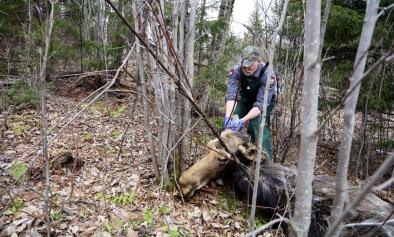Forest fires and climate-induced tree range shifts in the western US
Study key findings & significance
- Migrant trees are finding new homes in forests across the Western U.S., as changing climate conditions — accelerated by wildfires — force them to seek out cooler, wetter locations.
- The study provides the first empirical evidence that fires are hastening the movement of trees, likely by diminishing competition from established species
- The researchers analyzed U.S. Forest Service data from more than 74,000 sites across nine Western U.S. states, identifying tree species that are shifting their ranges toward cooler, wetter sites.
- The scientists found strong evidence that two species — Douglas fir and canyon live oak — experienced larger range shifts in zones that had burned.
Author quotes
“Complex, interdependent forces are shaping the future of our forests."
Avery Hill, study lead author and graduate student at Stanford’s University’s School of Humanities & Sciences
Abstract
Due to climate change, plant populations experience environmental conditions to which they are not adapted. Our understanding of the next century’s vegetation geography depends on the distance, direction, and rate at which plant distributions shift in response to a changing climate. In this study we test the sensitivity of tree range shifts (measured as the difference between seedling and mature tree ranges in climate space) to wildfire occurrence, using 74,069 Forest Inventory Analysis plots across nine states in the western United States. Wildfire significantly increased the seedling-only range displacement for 2 of the 8 tree species in which seedling-only plots were displaced from tree-plus-seedling plots in the same direction with and without recent fire. The direction of climatic displacement was consistent with that expected for warmer and drier conditions. The greater seedling-only range displacement observed across burned plots suggests that fire can accelerate climate-related range shifts and that fire and fire management will play a role in the rate of vegetation redistribution in response to climate change.
Related Content



